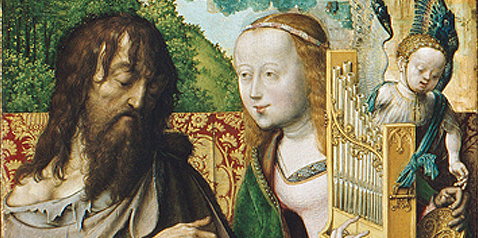
THE MASTER OF THE ST BARTHOLOMEW ALTARPIECE
Unlike many Netherlandish, German and Italian contemporaries, such as Hugo van der Goes, Hieronymus Bosch, Michael Wolgemut, Michael Pacher, Carlo Crivelli and Cosmè Tura, we do not know the ‘Master of the St Bartholomew Altarpiece’ by name. And so this major painter shares the fate of a ‘Master of the Virgo inter Virgines’ or a ‘Master of the Holy Kinship’: although he was ‘one of the great painters of the late fifteenth century’ (Neil MacGregor), he stands in the shadow of his own anonymity.
The nameless master drew on various regions and various artistic genres for his inspiration. While a child of his time, he is characterized by a decided originality, combined with a rich inventiveness and pleasure in experiment. The inclination to indulge in virtuoso artistic games, which sometimes comes across as almost over-the-top, is coupled in the case of this master with a pronounced (and often black) humour, which distinguishes him very clearly from Cologne painters of the period.
The ‘Master of the St Bartholomew Altarpiece’ maintained a well-organized workshop, where pattern sheets, whole pattern books and original pictures for prints were skilfully juggled, where devotional pictures, portraits and altarpieces were painted, where copies, replicas and variants were produced, possibly even stockpiled, and where embroideries were designed. There is much to suggest that this workshop was located in the northern or north-eastern Netherlands and not, as was long believed, in Cologne.


